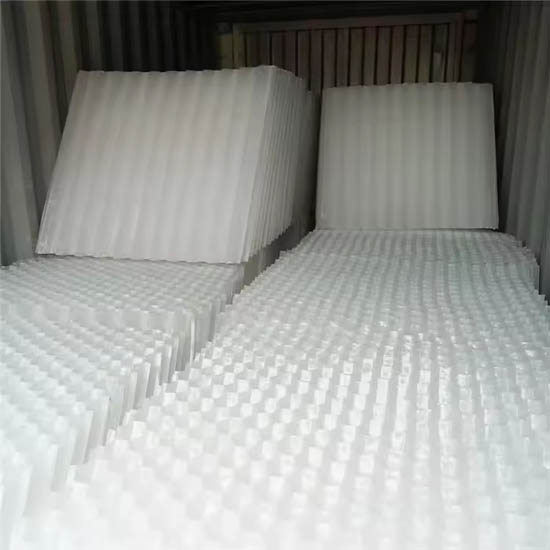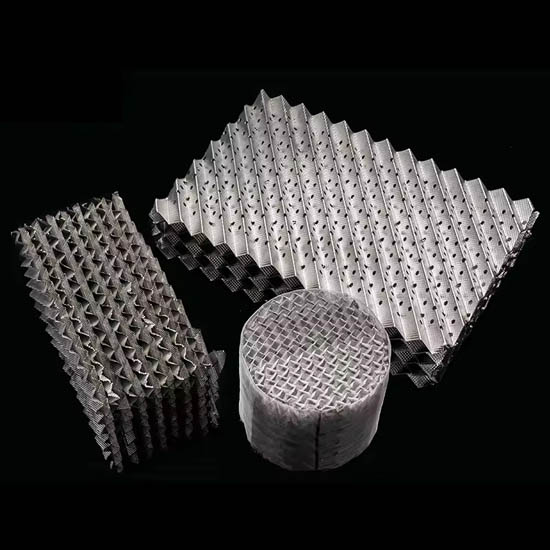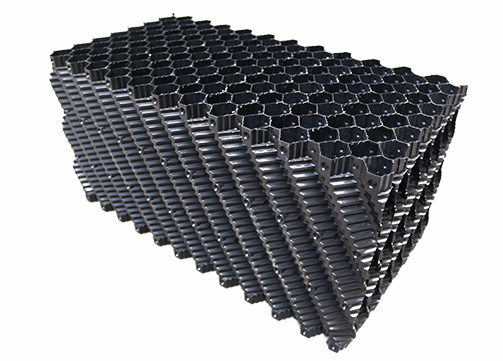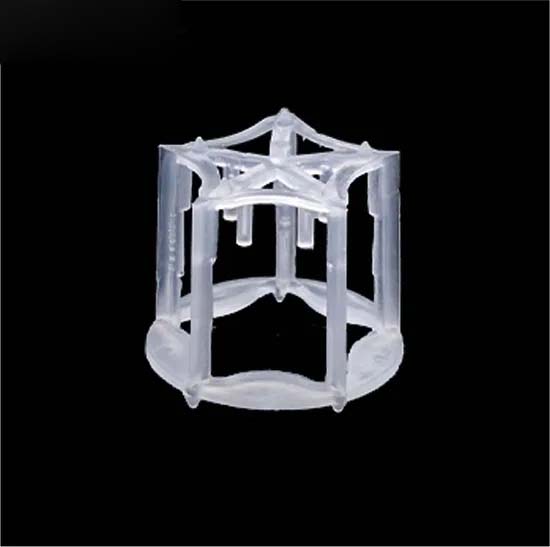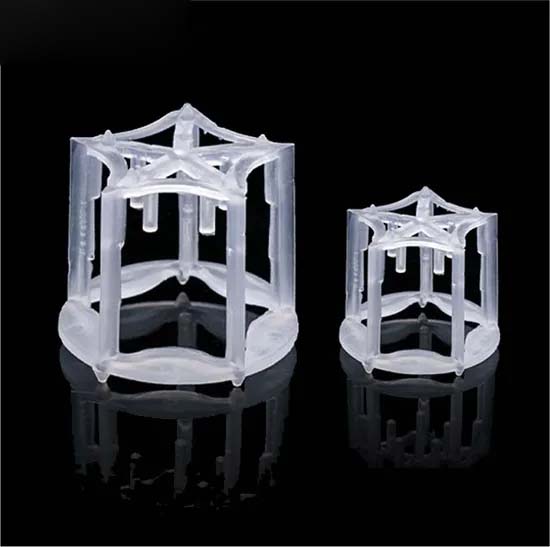Plastic Pentagon Ring PVC PP PVDF for Tower Packing
Plastic pentagon ring is a highly efficient random packing with a unique hollow-out structure that accelerates liquid flow and improves gas–liquid separation efficiency. The large side openings prevent clogging and fouling, while the five evenly downward-angled corners promote the formation of larger droplets, enhancing mass transfer. Made from chemically resistant plastics such as PE, PP, RPP, and PVC, it features light weight, high porosity, low pressure drop, low mass transfer unit height, high flooding point, full gas–liquid contact, and excellent chemical and heat resistance.
Plastic pentagon rings are widely applied in packing towers across petroleum, chemical, chlor-alkali, natural gas, and environmental protection industries. Suitable for operating temperatures from 60 °C to 280 °C, they are recognized for their large void ratio, sufficient gas–liquid contact, and high separation efficiency, making them a cost-effective and durable solution for various separation processes.
Key Features
- High capacity – Large openings and pentagonal base geometry deliver high throughput with low ΔP.
- Excellent mass transfer – Enhanced surface exposure promotes efficient gas–liquid contact and wetting.
- Anti-fouling design – Open structure minimizes clogging, suitable for particulate- and tar-laden streams.
- Chemical & thermal resistance – Available in PP, PE, PVC, CPVC, PVDF, PTFE, and reinforced PP for aggressive media.
- Lightweight & economical – Low bulk density reduces tower weight and installation costs.
Typical Applications
- Flue-gas desulfurization (FGD) and gas scrubbing
- Acid/alkali absorption and neutralization towers
- Stripping (ammonia, VOCs) and solvent recovery
- Chemical processing, petrochemical, coking gas treatment
- Heat and mass transfer services requiring low pressure drop
Materials & Temperature Range
- PP / RPP – typical service to ~100–120 °C
- PE / HDPE – typical service to ~80–90 °C
- PVC / CPVC – typical service to ~60–90 °C (PVC) and ~90–100 °C (CPVC)
- PVDF – typical service to ~140–150 °C
- PTFE – typical service to ~200–260 °C
Exact limits depend on grade, pressure, chemistry, and residence time. Consult your process conditions.
Common Sizes & Technical Data (Reference)
Values below are representative for water/air at ambient conditions. Actual performance varies with media and operating regime.
| Nominal Size (mm) |
Specific Surface Area (m²/m³) |
Void Fraction (%) |
Pieces per m³ (approx.) |
Bulk Density (kg/m³) |
Dry Packing Factor (m⁻¹) |
|---|---|---|---|---|---|
| 38 × 12 × 1.2 | ~240–250 | ~95 | ~46,000 | ~110 | ~260 |
| 50 × 17 × 1.5 | ~210–220 | ~96–97 | ~21,500 | ~105 | ~225 |
| 76 × 26 × 2.5 | ~190–200 | ~95–96 | ~6,500 | ~90 | ~205 |
How It Works
The pentagonal base and open lattice provide multiple flow paths and turbulence points. Liquid films spread across internal ribs while gas flows through large windows, increasing interfacial area and renewing liquid films for efficient mass transfer at low pressure drop.
Advantages vs. Conventional Plastic Random Packings
- Higher capacity at comparable efficiency due to larger effective openings
- Improved liquid distribution and wetting stability
- Lower tendency to bridge or foul compared with dense ring geometries
- Ease of installation; compatible with standard packing supports and hold-downs
Quality & Compliance
- Manufactured from virgin or specified recycled resins per order
- Optional UV-stabilized and flame-retardant grades
- Dimensions per lot sampling; MFI and density certificates available on request
Selection Guidelines
- Choose size: larger sizes for high-throughput / low ΔP; smaller sizes for higher efficiency.
- Choose material: match chemical resistance and temperature to process media.
- Bed depth: typical 1–6 m per stage depending on duty; consider redistributors for tall beds.

